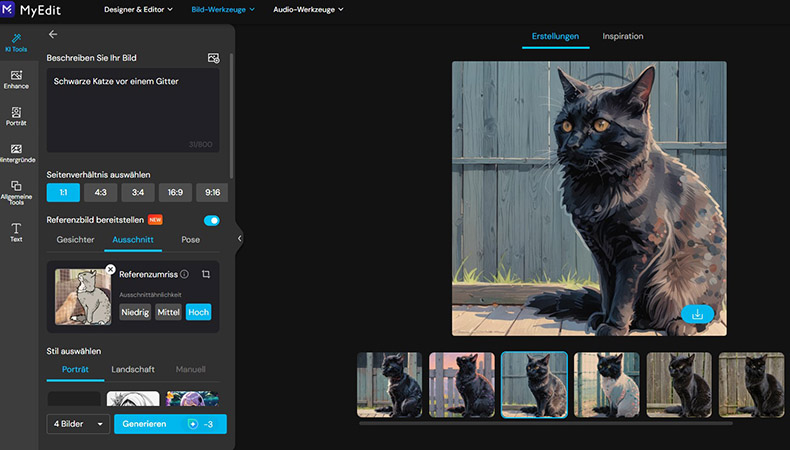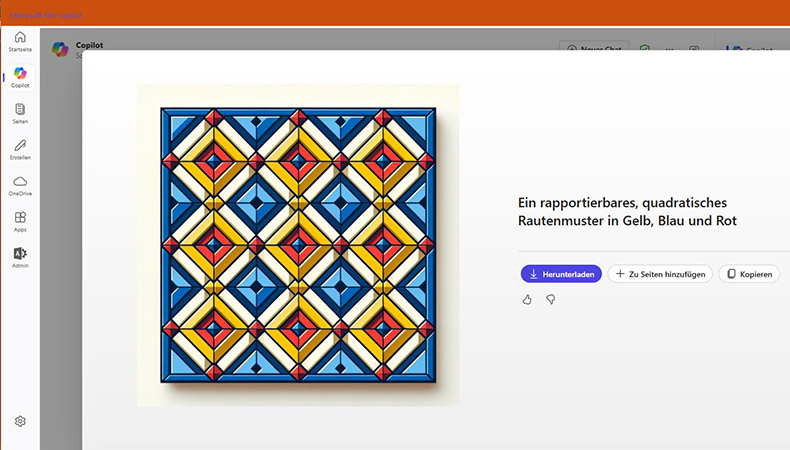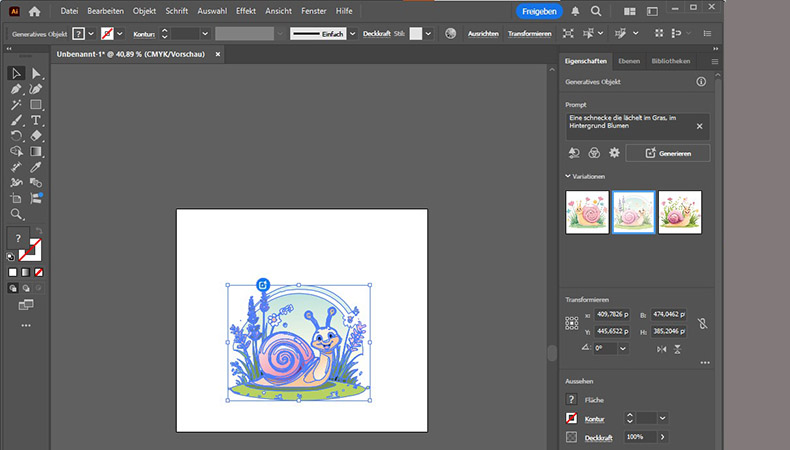Sonja Angerer provides a guide for printers and sign makers on safely incorporating AI into the design process. It explores AI’s benefits (speed, idea generation) and its significant pitfalls, particularly concerning complex legal/copyright issues, inconsistent technical quality for large-format printing, and creative limitations. It offers practical steps to mitigate risks.
AI has made enormous progress in recent years. It is has become part of many people’s lives already. In graphic arts, through services like Adobe Firefly, Dall E or the Microsoft Co-Pilot Designer, AI tools are available for both private and business use.
 CAPTION: AI designs can create hi-res and impressive images. But there are a few factors to consider when using it commercially. Credit Image: S. Angerer / AI
CAPTION: AI designs can create hi-res and impressive images. But there are a few factors to consider when using it commercially. Credit Image: S. Angerer / AI
AI has already made a massive impact on the creative industry. Artificial intelligence can be used at virtually all stages of the design process. This ranges from brainstorming for a project to the automatic generation of drafts, to the creation of design and colour variants. But as with any new technology, there are challenges to overcome. For printers and sign makers, these may even be particularly important, as they want to keep on selling their designs.
This article will cover:
- The advantages and disadvantages of AI in the design process
- Ethical and legal hurdles in the commercial use of AI designs
- Technical difficulties in printing AI motifs
It will also explain how printers and sign makers can make better use of AI design tools.
 CAPTION: Designer, part of Microsoft Copilot, creates beautiful AI patterns. Image Credit: S. Angerer / AI
CAPTION: Designer, part of Microsoft Copilot, creates beautiful AI patterns. Image Credit: S. Angerer / AI
AI Design: Advantages and Disadvantages
Often, printers and sign makers cannot charge the same fees for their design services as an advertising agency. Sometimes, for example with vehicle wrapping customers may consider designing as an integral (but unpaid) part of the service.
That’s why it’s helpful that AI can be used to create many design ideas in a short time. Some of those sketches are already quite elaborate, so printers may present them to the customer straightaway. Minor adjustments, such as colour variations of patterns, can be done with just a few clicks.
For technical reasons, however, AI designs cannot pick up on cutting-edge designs or local trends. They also do not show an individual design language. As a result, such graphics are sometimes perceived as stereotypical, not very relevant or even plain.
 CAPTION: AI designs often contain glitches. Often it needs careful examination to detect them, but some are quite drastic, as in this image from Adobe Firefly. Image Credit: S. Angerer / AI
CAPTION: AI designs often contain glitches. Often it needs careful examination to detect them, but some are quite drastic, as in this image from Adobe Firefly. Image Credit: S. Angerer / AI
Ethical and legal hurdles in the commercial use of AI designs
Works of art available online have been used and are still utilised to train AI models. Artists try to defend themselves against this as they denounce AI training as an unauthorised use of their intellectual property. In most countries, however, AIs are currently allowed to be trained with any publicly accessible data.
This means that in just a few years, the demand for stock photography and many forms of illustration will probably dry up almost completely. When printers or sign makers sell computer-generated content to their customers, they are actively contributing to this development.
Currently in Germany, but also most other countries in the world, copyright is granted only to a person. This means that unedited AI drafts are not considered protection-worthy, as they lack human creative output. In B2B business, this can result in several difficulties, for example, when selling rights to use the design. When registering a design with the German Patent and Trademark Office, uniqueness is less important, so an AI logo might do. But legislation is often quite untrustworthy and very different between countries.
Many experts are calling for copyright and trademark law to acknowledge use of AI tools, as right now, many details have not been decided yet. This situation is prone to make legal disputes over AI-generated designs for business use lengthy and expensive. Also, when using design AI services, whether for a fee or free of charge, the designer must accept the terms and conditions imposed by the owner of the software. These license agreements may allow commercial use, as is currently the case with OpenAI, but it is always safer to double-check first, especially with free tiers.
Often, there also are other conditions included in T&C, eg. a ban on “offensive or explicit content”, whatever the AI service´s owner deems that to be. Also, if an AI-generated design is too similar to a copyrighted image or logo, third-party intellectual property rights may still be affected. Often, AIs integrate invisible digital watermarks to track designs online.
 CAPTION: Vector graphic generated with AI in Adobe Illustrator. Image Credit: S. Angerer / AI
CAPTION: Vector graphic generated with AI in Adobe Illustrator. Image Credit: S. Angerer / AI
Technical Issues in Using AI Designs for Printing and Sign Making
Most design AIs are optimised for images that are used online or on mobile devices. To save resources, they therefore render at a maximum resolution of 96 ppi and at very limited sizes. For large format printing, this data is often not sufficient, yielding pixelated print output.
If high-resolution images are generatively expanded or processed with the help of AI, it may alter picture resolution in the AI layers, affecting print quality with larger pictures or a narrow viewing distance. This applies to pixel images only, though. Vector-based data, for example from Adobe Illustrator or CorelDraw, can be scaled to any size regardless if it was created with the help of AI.
AI models have become much better in recent years. For example, mammals with the wrong number of legs or depictions of people with strange hands are much rarer an outcome today. But do remain cautious, as AI-generated designs may still have strange structures, artifacts or perspectives that only seem disturbing at second glance – or in larger print.
 CAPTION: When high-resolution images are enhanced, the AI part may still be a lower resolution. Image Credit: S. Angerer / AI
CAPTION: When high-resolution images are enhanced, the AI part may still be a lower resolution. Image Credit: S. Angerer / AI
How printers and sign makers can use AIs safely
AI generated designs can cause some difficulties in B2B business. Nevertheless, printers and sign makers should not rule out the use of AI in the design process as there are proven ways to avoid most of its pitfalls:
- Only use AI services allowing commercial use of the designs.
- Consider AI designs as inspiration rather than finished products.
- Keep use-case in mind, as for a fast fashion shirt, it may still be irrelevant whether the AI design can be protected. But this is probably not the case for a logo intended for international use.
- Check the resolution and colour modes of AI designs.
- Carefully check AI graphics for artifacts, repetition, perspective errors, and inconsistent shadows.
Using of up-to-date hardware and software can also help stabilise design workflows with AI. In addition, employees in any company working with AI should stay on top of their game by getting regular training, as things are moving very quickly right now. One thing is certain though: AI will continue to enhance human creativity for years to come, as it has altered the design space significantly already.